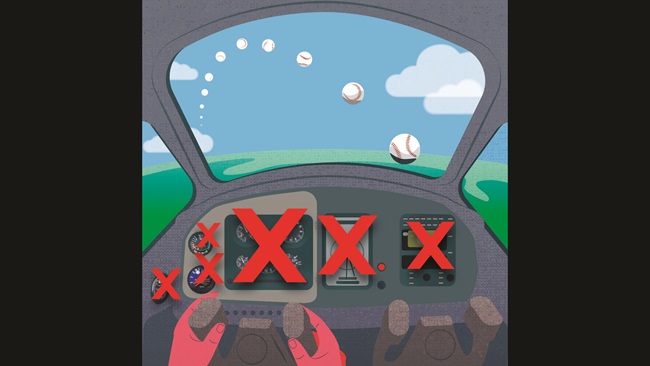![]() Cleared for an ILS/DME approach to Runway 5R, the flight descended to 8,000 feet msl and turned to intercept the localizer. The aircraft leveled a dot below the glideslope, however, and the control input applied to correct that condition—an abrupt pitch increase—triggered a stall warning.
Cleared for an ILS/DME approach to Runway 5R, the flight descended to 8,000 feet msl and turned to intercept the localizer. The aircraft leveled a dot below the glideslope, however, and the control input applied to correct that condition—an abrupt pitch increase—triggered a stall warning.
Sloppy flying during a critical phase of flight?
Hard to say. The culprit, in the immediate sense, was an autopilot. Although the air carrier crew was able to fix things, it got exciting with the aircraft breaching “alpha floor,” eliciting “toga.”
Those terms aren’t in your pilot vocabulary? Finding a place for them couldn’t hurt, at least in how you think about flying IFR. You will also be advancing the goals of the General Aviation Joint Steering Committee, in which AOPA participates, and which strongly believes that the better pilots understand angle of attack, the safer they will be.
Failing to avoid alpha floor means you exceeded the maximum angle of attack. Toga stands for takeoff/go-around power (which the airliner’s autothrottles were about to apply).
That said, let’s not leave the Airbus in an approach to a stall in a turn at 8,000 feet msl.
The crew, according to a filing with the Aviation Safety Reporting System, faced two problems: the “low energy” condition, and more troubling, uncertainty what the autopilot would do about it.
“I immediately disconnected the autopilot in order to temper the aggressive inputs, i.e. decrease pitch, though my efforts were not timely or significant enough to avoid alpha floor (thrust automatically to TOGA). I performed the alpha floor recovery technique to regain control of the thrust and was still in a position to make a normal, stabilized approach.”
In the future, the pilot said, that approach would be hand-flown.
Remember the stalls you practiced during your student pilot days? You’d demonstrate a straight-ahead entry and recovery, feeling the energy bleeding off, then buffeting, and slackness of controls, and ultimately some kind of “break” (always the least predictable part).
That was sort of okay. But then your instructor would say, “Okay, now let’s try that again, this time in a turn.”
You wondered why in the world it was necessary to do that.
This was why. And it probably wasn’t mentioned back then, but even when the autopilot is flying, it’s still your job to avoid alpha floor.



